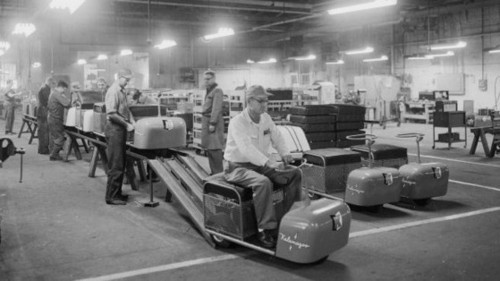Sep 12 2012
Deming’s Point 3 of 14 – Cease dependence on inspection to achieve quality…
Deming’s 3rd point is the first to mention quality, and it is specific, even if its implementation is sometimes a tall order. Its complete statement is as follows:
“Cease dependence on inspection to achieve quality. Eliminate the need for massive inspection by building quality into the product in the first place.”
The idea that quality should be built into the design of the products and into the processes to manufacture them has come to be generally accepted in the past 30 years, and implemented in many industries. You never hear anyone arguing against it. At the same time, final inspection and test has never completely disappeared, even in the car industry. Engines, for example, are all tested before moving on to assembly, even at the best manufacturers, and body paint is visually inspected by people.
In the details he gives about this point, Deming acknowledges that there are exceptions where no one knows how to build quality into the process. In particular, he mentions integrated circuits. It is still true in 2012, and the economic importance of this “exception” has grown in the past 30 years. There are also other, older technology products for which there is no alternative to sorting the output. Lead shot, for example, is produced by pouring molten lead into a sieve, collecting the solidified drops, sorting the ones that are sufficiently round based on their ability to roll down chutes, and recycling the others.
Oddly, Deming includes “calculations and other paperwork” in a bank among the activities for which mistakes are “inevitable but intolerable.” Today, an individual using on-line bill-pay to settle a utility bill expects that the exact amounts will be properly debited and credited without human intervention. If, on the other hand, you are occasionally transferring $300K from Russia to the US, you can expect humans to validate the transaction.
At least in Out of the Crisis, Deming does not distinguish between inspection and testing. Inspection is a manual process, subject to human error and to dilution of responsibility when a product is subject to multiple inspections, which is why he describes it as ineffective as a filter for defectives. At the end of their process, however, integrated circuits are not inspected by humans but tested on automatic test equipment that, if properly calibrated, provides consistent results. The relevance of these results depends on the human process of programming the test equipment; the productivity of test operations, on the sequencing of the tests.
Because inspection and test is perceived as “non-value added,” it has a bad odor in the Lean community, and is ignored in its literature. Today, however, it is something we have to do, and we might as well do it well. Deming discusses it in Chapter 15 of Out of the Crisis; I, in Chapter 16 of Lean Assembly .





Sep 13 2012
L.A.M.E. strikes again, in an office environment
See on Scoop.it – lean manufacturing

L.A.M.E. (Lean As Mistakenly Executed) is giving Lean a bad name. The article’s lead paragraph says is all:
How do you respond to this? Following is a comment I posted:
See on lukerumley.com
Share this:
Like this:
By Michel Baudin • Blog clippings 3 • Tags: Lean bashing, Lean Office